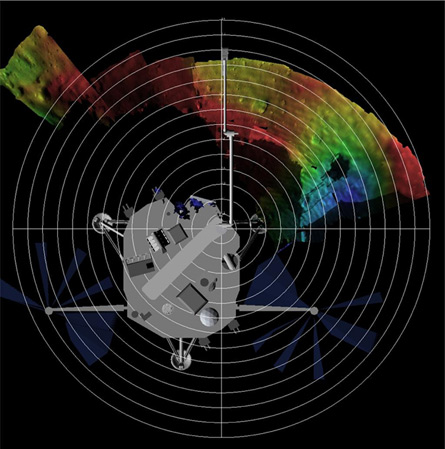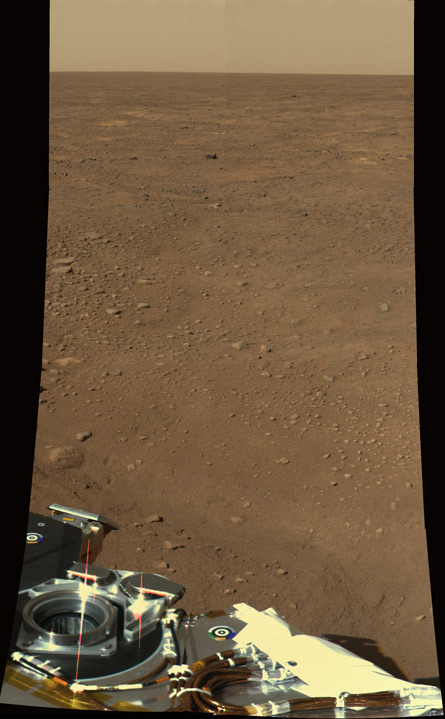After a day’s delay, scientists successfully sent up commands to unstow the robotic arm of NASA’s Phoenix Mars Lander. The arm is a critical part of the Phoenix mission, which touched down on Mars’ arctic plains on May 25. The lander will use the arm to dig into the icy layers of the northern polar region and deliver samples to instruments that will analyze the composition of material and determine whether the region might have ever been a habitat for life.


Moving the arm was delayed because a UHF radio system on a craft orbiting overhead, Mars Reconnaissance Orbiter, abruptly shut down before it could relay commands to Phoenix. Today’s commands were relayed by another orbiting craft, Mars Odyssey. Odyssey will continue to act as the main relay station between Earth and Phoenix until the radio system on Reconnaissance is deemed reliable. Every two hours, one of the two craft passes over the Phoenix landing site.
In a series of seven moves, the arm will first rotate its wrist to free its forearm from a restraining device. Then it will release its elbow and move it from underneath the biobarrier, a thin sheath that had protected it from contamination. While waiting for commands to begin moving its arm, Phoenix wasn’t idle. It began taking a preprogrammed series of images, including the first panoramic swaths of the digging area and the adjoining region in which the arm will dump material. The immediate landscape has evidence of both troughs and polygons — patterns that indicate the presence of underlying ice.
“We’ve got a perfect workspace to do the science that’s been projected for this mission,” Phoenix mission manager Barry Goldstein of NASA’s Jet Propulsion Laboratory in Pasadena, Calif., told reporters during a press briefing May 28.
Phoenix should finish recording a full black-and-white panorama at low resolution in a day or two, while a high-resolution color rendition is expected in two to three weeks, says Phoenix scientist Mark Lemmon of TexasA&MUniversity in College Station. Phoenix should start digging next week.
In related news, European scientists released an audio recording of Phoenix’s descent through the Martian atmosphere. The audio was recorded by another Mars orbiting craft, the European Space Agency’s Mars Express.
To listen to Phoenix descend onto Mars, click here .






